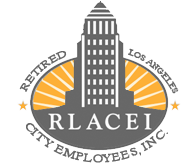
LACERS BOARD UPDATE
By Michael R. Wilkinson, LACERS Commissioner
Email: MikeWilkinson4LACERS@gmail.com
H
ow does LACERS plan to ensure that funds are available for your healthcare now as well as many years into the future? Hats off to all of you who said that we use actuaries. By making predictions using actuarial models LACERS sets aside money today that will be used far in the future to provide affordable health care.
The use of actuarial models and decades of “prefunding” puts LACERS far ahead of most other pension plans and makes our retiree health system 107.1 percent funded, meaning it has more than needed to fully fund our health plans. The models are provided by our actuary, Segal.
To keep the plan well-funded, LACERS must be able to make assumptions about future health care premium costs. The trend rate for the following year’s non-Medicare premium starts at 7.50 percent in 2024 (for setting 2026 rates) and decreases .25 percent each year until it hits 4.50 percent after 10 years and stays at that amount for following years.
The first-year medical trend rate for Medicare premiums is .50 percent, and then goes to 7.00 percent for the following year, then decreases by .25 percent each year until it hits 4.50 percent in 2035 and stays at that amount for the future years.
The dental trend assumption is set at 3.0 percent and the Medicare Part B premium assumption is set at 6.20 percent for calendar years 2025 through 2033, followed by 5.75 percent, then grading down by .25 percent for five years until hitting 4.50 percent and then remaining at that amount.
Segal states in a report that the non-Medicare rates need the adjustment to set the non-Medicare rates to pre-pandemic levels and to reflect high prescription prices. During the pandemic, people stayed away from doctors’ offices and hospitals and usage plummeted.
Finally, for all of us the key question is what will my health care costs be after the medical subsidy? Segal recommends that we assume the medical subsidy will increase at the same rate as the medical trend rate. This means much of these projected increases will be covered by increased subsidies.
Finally, to bring it up to date, the average medical premium increase for all the LACERS health, dental and vision carriers for the 2025 plan year is 6.38 percent over the previous year












